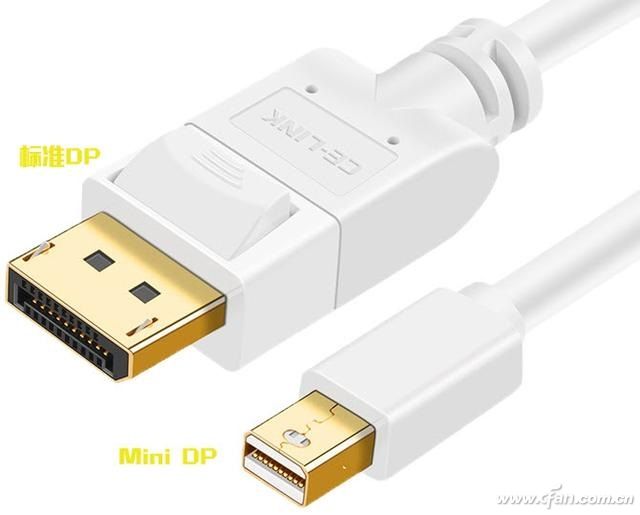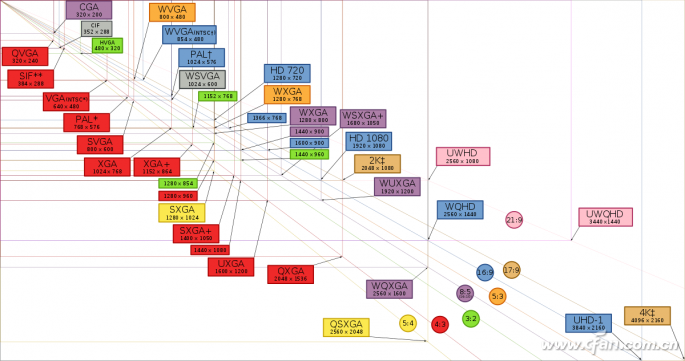Speaking of the video interface, many small partners can say one or two or three, not HDMI, DP, VGA, but what's new? In fact, the most familiar is often the most unfamiliar, and today we talk about the three interfaces. The strongest video? HDMI interface that thing Divided into HDMI, mini HDMI, Micro HDMI three appearances, versions from 1.0 up to the latest 2.1, but the main application of the 1.4 version and the following are more standard, 2.1 is also focused on paper. Devices with HDMI have the feature of “plug and playâ€, and the “negotiation†between the signal source and the display device will automatically select the most appropriate video/audio format. To pay special attention, this "plug and play" just means that the devices can be automatically negotiated, rather than physically plugged in at any time! In other words, when installing and removing the HDMI cable, the device must be powered off first, otherwise it may damage the device (some devices with protection circuit will not be a problem, but can not guarantee that all devices have this design)! On the resolution, the three HDMI interfaces are the same, and the supported resolution is different depending on the HDMI version. Moreover, to achieve the resolution of the corresponding version, the wire must be matched. For example, to achieve the resolution standard of 4K@60Hz, it must be satisfied that the devices at both ends support the HDMI version 1.4, and the wire material also complies with the 1.4 version standard. In addition, there is still another form of HDMI - Type-C interface (converted into HDMI), its purpose is to facilitate the user to connect video output devices, this design is mostly in ultra-thin notebooks and even mobile phones. Free is king! You are such a DP interface The English name of DP interface is "DisplayPort". DisplayPort is a display interface released by Video Electronics Standards Association (VESA). As the successor of DVI, DisplayPort will support the transmission of high-definition audio signals while transmitting video signals, and it will also support 8K resolution. DP interface from the 1.0 version to the current version of 1.4, it sounds digitally smaller than HDMI, but the DP interface has obvious advantages, 1.3 version to achieve 4K (3840X2160) @ 120Hz, 5K (5120X2880) @ 60Hz, 8K (7680X4320) @ 30Hz resolution output, bandwidth up to 32.4Gbps, to know only HDMI 2.0 only 18Gbps. Why DP interface? Have HDMI also added one more? This involves a "money" word - DP interface is free to use, unlike HDMI requires authorization fees! It can be noted that PC-type devices, including monitors, all have DP interfaces, while home appliances such as TVs have only HDMI interfaces. Who is it for me? VGA interface does not fall for millennia The VGA interface is an old face. The video interface that was invented in 1987 still exists on many devices. Including some standard specifications of the notebook (except for ultra-thin notebooks and flat-panel notebooks), and even the vast majority of desktop graphics (including core graphics), still equipped with a VGA interface. The VGA output and transfer are analog signals, but the graphics generated by the video card is actually a digital signal, and the display uses a digital signal. Therefore, using the VGA video interface is equivalent to experiencing a digital-to-analog conversion and an analog-to-digital conversion, which also means that it is very susceptible to interference, signal conversion is also easy to bring the loss of the signal, the result is that the picture is easy to have missing. In theory, the maximum resolution supported by the VGA is 2048×1536@60Hz, but the maximum output capability of the general VGA interface in actual use is in the 1080P resolution, which is outdated in comparison. That being the case, why is VGA still widely available on various devices? The reason is actually super simple - in order to ensure maximum compatibility. In the end, we often hear QHD, FHD and other terms. Many small partners do not know what they mean. These are actually a kind of proxy for a specific resolution. Of course, this is also regulated. Xiaobian gives everyone a picture. You can clearly understand what the resolution nickname stands for. The so-called portable projector, also known as pocket projector, mainly through the 3M LCOS RGB three-color projector and decoding technology, the traditional huge projector is compact and portable, making the projection technology closer to life and entertainment. portable projector mini,portable projector 1080p,portable projector camping,portable projector with speakers,portable projector for camping Shenzhen Happybate Trading Co.,LTD , https://www.szhappybateprojectors.com




Advantages compared with traditional projectors:
1. Small size, light weight, easy to carry.
2. Low calorific value and low noise.
3. The price is relatively cheap.
4. Most models support wireless connection through software projection.
Applicable fields:
1. Replace some functions of TV: some machines can have built-in CMMB function, or can be directly connected to the set-top box to put TV, which can be used as a 21-inch TV during the day and a 60-100-inch TV at night (Note: Because of lumen and resolution issues, lumens during the day If the degree is not enough, it must be projected at a close distance) to achieve the effect of home theater; it is convenient to move and break through the traditional film and television space. Even if you are on the mountain, you can also share today's TV series, movies, and MTV with your lover.
2. Business trip: Portable projectors are easy to carry because of their small size and light weight. When you need to display computer content or mobile phone content, you only need to connect the portable projector to achieve the demonstration effect.
3. Private space: For dormitory beds or small private spaces, in the absence of a computer, you can use a portable projector to project the content of your mobile phone to watch video pictures, etc., without staring at the mobile phone at close range.